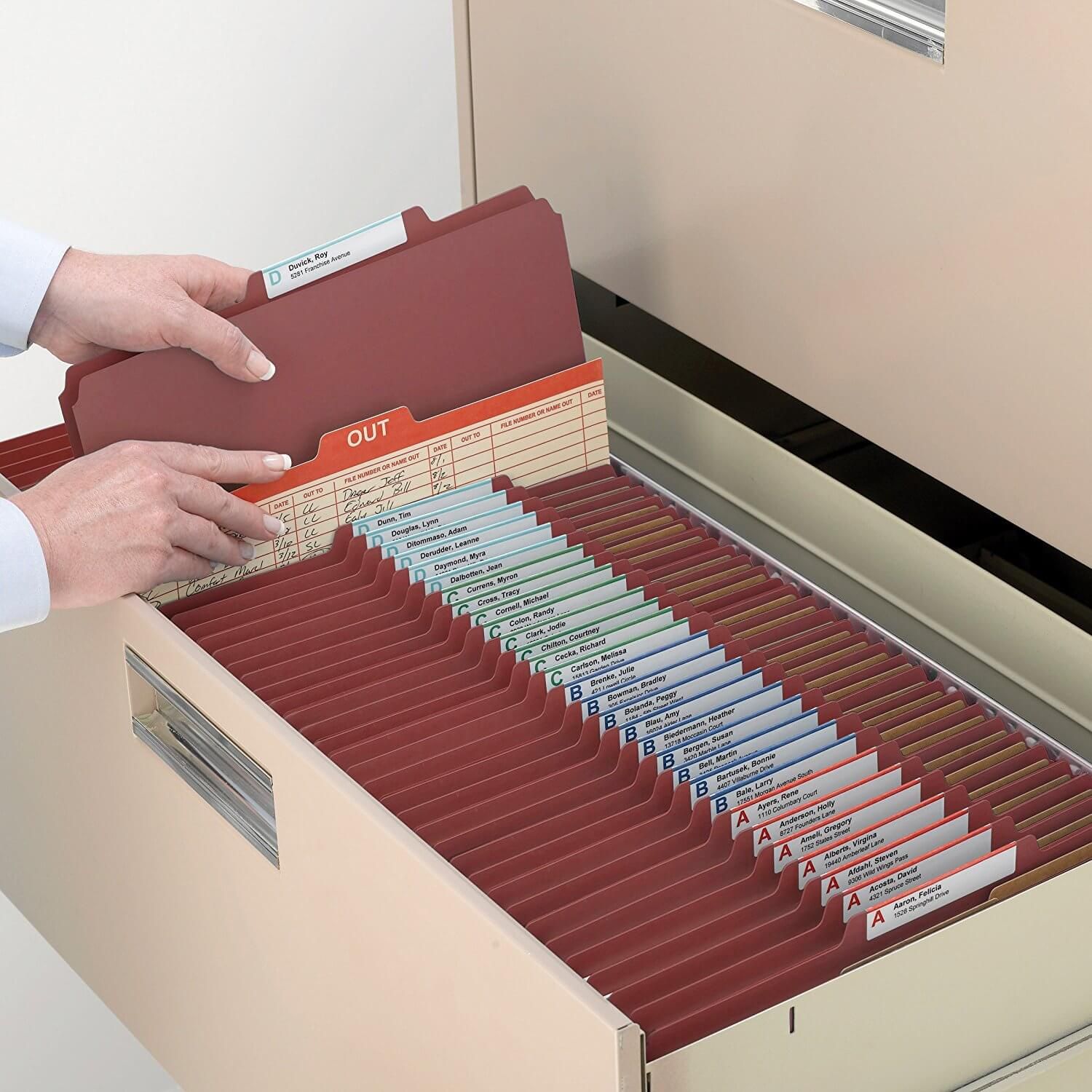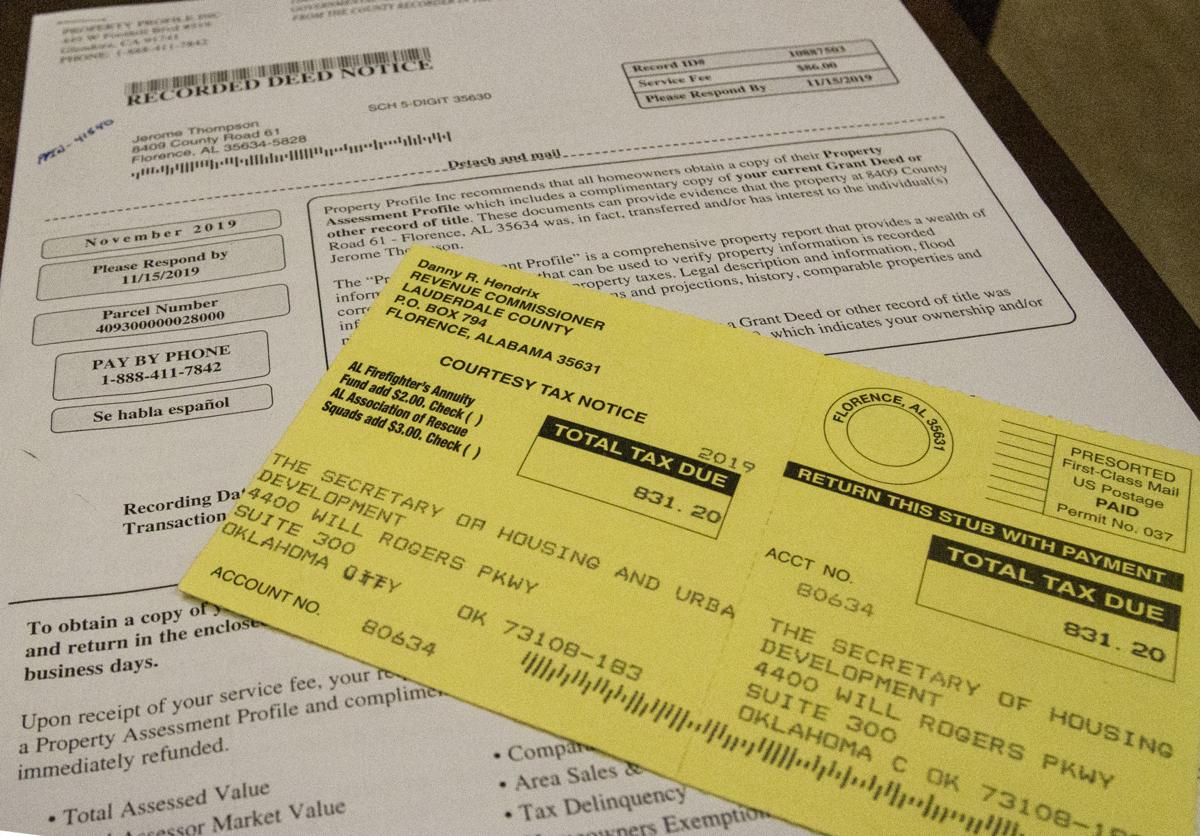Home>diy>Building & Construction>How To Put A Construction Lien On A Property


Building & Construction
How To Put A Construction Lien On A Property
Modified: December 7, 2023
Learn how to put a construction lien on a property with our step-by-step guide. Protect your rights as a contractor or supplier in building construction.
(Many of the links in this article redirect to a specific reviewed product. Your purchase of these products through affiliate links helps to generate commission for Storables.com, at no extra cost. Learn more)
Introduction
Welcome to the world of construction liens! When it comes to building projects, ensuring that you are adequately compensated for your work is crucial. Unfortunately, disputes and non-payment can sometimes complicate matters. This is where a construction lien can be a powerful tool to protect your interests and assert your rights.
A construction lien, also known as a mechanics lien or contractor’s lien, is a legal claim that can be placed on a property to secure payment for labor, materials, or services provided during a construction project. It is a way to hold property owners accountable and ensure that contractors, subcontractors, and suppliers receive the compensation they are rightfully owed.
The primary purpose of a construction lien is to provide a form of security for those involved in the construction process. It serves as a practical means to prevent property owners from potentially selling or transferring the property without first resolving any outstanding debts related to the project.
The right to file a construction lien is not limited to specific individuals or businesses. It extends to contractors, subcontractors, suppliers, architects, engineers, and anyone else who provides labor or materials for the construction project.
Now that we have a basic understanding of construction liens and their purpose, let’s delve into the process of how to put a construction lien on a property. This involves preparing a notice of intent, filing the lien, enforcing it if necessary, and releasing it once the debt has been satisfied.
Before we dive into the details, it’s important to note that construction lien laws may vary from state to state. It’s crucial to familiarize yourself with the specific laws and regulations in your jurisdiction to ensure compliance.
In the next sections, we will explore each step of the construction lien process, sharing valuable insights and practical tips along the way. By the end, you will have a comprehensive understanding of how to safeguard your interests and navigate the complexities of construction liens.
Key Takeaways:
- Construction liens are crucial for securing payment in the building industry. Understanding the process, from sending a notice of intent to releasing the lien, is essential for protecting financial interests and navigating potential payment disputes.
- Filing a construction lien involves specific steps, documentation, and adherence to deadlines. Enforcing the lien may require negotiation, mediation, or legal action. Releasing the lien is crucial for clearing the property title and maintaining positive industry relationships.
Read more: How To Put A Lien On A Construction Project
Understanding Construction Liens
To effectively navigate the process of putting a construction lien on a property, it is essential to understand what a construction lien entails, its purpose, and who has the right to file one.
A construction lien, also known as a mechanics lien or contractor’s lien, is a legal claim that can be placed on a property by contractors, subcontractors, suppliers, and other parties involved in a construction project. It acts as a security interest in the property to ensure payment for labor, materials, and services provided.
The primary purpose of placing a lien on a property is to protect the rights and financial interests of those involved in the construction project. It serves as a safeguard against non-payment and provides a legal mechanism to secure compensation for work completed.
When a party files a construction lien, it creates a cloud on the title of the property, making it difficult for the property owner to sell, transfer, or refinance the property without first resolving the outstanding debt. This places significant pressure on property owners to address any payment issues and promotes fair and timely payment practices within the construction industry.
Who can file a construction lien? The right to file a lien is not limited to just contractors; it extends to various parties involved in the construction project. Typically, those who can file a construction lien include:
- General contractors: These are the primary contractors responsible for overseeing the entire construction project.
- Subcontractors: These are contracted by the general contractor to perform specific tasks or provide specialized services.
- Material suppliers: These are the entities that provide the necessary materials (e.g., lumber, concrete, plumbing fixtures) for the construction project.
- Architects and engineers: These professionals are involved in the design and planning of the project and can file a lien if unpaid for their services.
- Laborers: Individuals who provide physical labor on the construction site, such as carpenters, electricians, or plumbers, may be eligible to file a lien.
It’s important to note that subcontractors and suppliers may need to provide a preliminary notice or notice of furnishing within a specified timeframe to preserve their lien rights. Failure to provide these notices may result in the loss of their ability to file a construction lien.
By understanding the definition and purpose of construction liens and knowing who has the right to file one, you can ensure that you take the necessary steps to protect your financial interests and secure payment for your contributions to a construction project.
Preparing the Notice of Intent
Before filing a construction lien on a property, it’s essential to prepare and send a notice of intent. A notice of intent, also referred to as a pre-lien notice, serves as a formal communication to the property owner, providing them with notice of an unpaid debt and potential lien on their property.
The importance of sending a pre-lien notice cannot be overstated. It serves as a warning to the property owner, giving them an opportunity to address any payment issues before a construction lien is filed. In many states, sending a notice of intent may even be a statutory requirement for preserving lien rights.
When preparing a notice of intent, there are key pieces of information that should be included:
- Identification of the parties: Clearly state the names and addresses of the claimant (the party filing the lien) and the property owner.
- Description of the project: Provide a brief description of the construction project, including the property address or legal description.
- Date of last work or delivery: Specify the date of the claimant’s last work, delivery of materials, or provision of services to the project.
- Amount due and unpaid: Clearly state the amount of money owed by the property owner and outstanding on the project.
- Payment demand and deadline: Clearly state the demand for payment and specify a deadline for the property owner to fulfill the outstanding payment.
- Consequences of non-payment: Inform the property owner of the potential consequences of non-payment, including the filing of a construction lien on their property.
Once the notice of intent is prepared, it needs to be sent to the property owner in a manner that adheres to the legal requirements of your jurisdiction. Some states may require the notice to be sent via certified mail, while others may allow for electronic delivery or personal service.
It’s crucial to keep detailed documentation of the notice of intent, including proof of delivery, such as certified mail receipts or electronic delivery confirmation. This documentation can be valuable in the event that you need to proceed with filing a construction lien.
By sending a notice of intent, you give the property owner an opportunity to resolve any payment issues before taking further legal action. It’s a proactive step that can help avoid unnecessary disputes and potentially lead to a resolution without the need for filing a construction lien.
Filing the Construction Lien
Once you have sent a notice of intent and your payment demands have not been met, the next step is to proceed with filing a construction lien. Filing a lien involves specific steps, required documents, and adherence to filing fees and deadlines. Let’s explore the process in detail.
Here are the general steps to file a construction lien:
- Gather necessary documentation: Collect all relevant documents related to the construction project, such as contracts, invoices, change orders, and delivery receipts. These documents will help support your claim and demonstrate the work performed or materials provided.
- Complete the lien form: Each state may have its own specific lien form, which must be completed accurately and in compliance with the relevant laws. The form typically requires information about the property owner, the claimant, a description of the work performed or materials provided, and the amount owed.
- File the lien with the appropriate office: The lien must be filed with the designated office in the jurisdiction where the property is located. This is typically the county recorder’s office or a similar government agency. Follow the specific procedures for filing, including any requirements regarding notarization or additional copies of the lien form.
- Pay the filing fee: Most jurisdictions require the payment of a filing fee to process the construction lien. The amount of the fee will vary depending on the jurisdiction. Be sure to submit the fee along with your lien form, adhering to the acceptable methods of payment specified.
- Respect the filing deadline: Construction lien laws typically have strict filing deadlines. It is crucial to file the lien within the prescribed timeframe, which is usually a set number of days after the completion of the work or the last provision of materials. Failure to meet the deadline may result in the loss of your lien rights.
- Serve notice of the filed lien: Once the construction lien is filed, you may need to serve notice on the property owner, notifying them of the recorded lien. This serves as further communication of the claim and puts additional pressure on the owner to address the outstanding debt.
It’s important to note that the requirements and procedures for filing a construction lien can vary from state to state. Make sure to familiarize yourself with the specific laws and regulations in your jurisdiction to ensure compliance and maximize the effectiveness of your lien.
Filing a construction lien can be a complex and intricate process, so consulting with an attorney or a qualified professional experienced in construction lien matters is highly recommended. They can provide guidance, assist with the preparation of documents, and ensure that you meet all necessary requirements to protect your rights and maximize your chances of securing payment.
Before putting a construction lien on a property, make sure to follow all the necessary legal requirements and deadlines in your state. This may include sending a preliminary notice and filing the lien within a specific timeframe.
Enforcing the Construction Lien
After filing a construction lien, you may need to take further action to enforce the lien and secure payment for the work you have performed or materials you have provided. Enforcing a construction lien involves exploring different options, potentially hiring an attorney, and working towards resolving any disputes that may arise.
Here are the options you may consider for enforcing a construction lien:
- Negotiation and settlement: In some cases, a dispute can be resolved through negotiation and settlement. This involves open communication and discussion with the property owner or their representative to reach an agreement on payment terms or potentially resolve any misunderstandings or issues. This can be a cost-effective and timely solution, as it avoids the need for protracted legal proceedings.
- Mediation or arbitration: If direct negotiation fails, alternative dispute resolution methods, such as mediation or arbitration, can be pursued. These processes involve the intervention of a neutral third party who helps facilitate a resolution between the parties. Mediation and arbitration are often more informal, confidential, and less costly than going to court.
- Legal action and litigation: If all other attempts at dispute resolution fail, it may be necessary to escalate the matter to a formal legal proceeding. Hiring an attorney experienced in construction lien matters can be invaluable in navigating the complexities of the legal system and representing your interests in court. Litigation can be a lengthier and costlier process, but it may be necessary to protect your rights and secure payment.
When enforcing a construction lien, it’s important to keep detailed records of all relevant documentation, including contracts, invoices, correspondence, and any communication related to the dispute. This evidence will strengthen your case and help support your claim for payment.
Throughout the enforcement process, it’s crucial to maintain open lines of communication and professionalism. Engaging in collaborative discussions and demonstrating a willingness to work towards a resolution can increase the chances of reaching a favorable outcome.
Remember, each situation is unique, and the appropriate course of action will depend on the specific circumstances and the laws of your jurisdiction. Consulting with a legal professional who specializes in construction lien matters can provide you with personalized advice and guidance tailored to your situation.
Enforcing a construction lien may be a challenging process, but with the right approach and the support of legal experts, you can assert your rights and work towards achieving a fair resolution.
Read more: What Is A Lien In Construction
Release of the Construction Lien
Once the outstanding debt has been settled or resolved, it is important to release the construction lien. Releasing the lien is a crucial step to clear the title of the property and confirm that the debt has been satisfied. Let’s explore the process of releasing a construction lien, including the necessary documentation and procedures.
To release a construction lien, follow these general steps:
- Prepare a lien release document: The specific requirements for a lien release may differ depending on the jurisdiction, but generally, this document should include the property owner’s identifying information, the lien claimant’s information, a description of the lien being released, and a statement confirming that the outstanding debt has been paid or resolved.
- Notarize the lien release document: In many cases, a lien release document needs to be notarized in order to be considered legally valid. This involves having a notary public witness the signing of the document and confirm the identities of the parties involved.
- Deliver the lien release to the property owner: Once the lien release document has been prepared and notarized, it must be delivered to the property owner. This can be done through various methods, such as personal delivery, certified mail, or electronic delivery if allowed by the jurisdiction. Be sure to retain proof of delivery, such as a receipt or delivery confirmation.
- File the lien release with the appropriate office: Depending on the jurisdiction, you may have to file the lien release document with the same office where the initial construction lien was filed. This step helps ensure that the release is recorded, and the title of the property is clear.
It is important to note that each state may have specific requirements for the content, format, and timing of the lien release. Familiarize yourself with the regulations in your jurisdiction to ensure compliance and avoid any complications.
The effect of releasing a construction lien is significant. Once the lien is released, it removes the cloud on the title and restores the property owner’s ability to sell, transfer, or refinance the property without any encumbrances related to the lien. Releasing the lien also provides reassurance to the property owner and helps maintain positive working relationships.
There are several benefits to releasing a construction lien:
- Clear title: Releasing the lien ensures that the title of the property is no longer encumbered, making it easier for the property owner to engage in real estate transactions.
- Maintaining professional reputation: Demonstrating professionalism and promptness in releasing a lien can enhance your reputation in the industry and potentially lead to future business opportunities.
- Resolving disputes: Releasing the lien signifies that the dispute over payment has been resolved, allowing both parties to move forward without any lingering issues.
- Encouraging payment in future projects: By promptly releasing the lien upon resolution of the debt, you create trust and may increase the likelihood of timely payment in future construction projects.
Releasing a construction lien is a critical step to finalize the resolution of outstanding debt and maintain positive relationships within the construction industry. Follow the necessary procedures and requirements in your jurisdiction to ensure a smooth release and to protect your interests.
Conclusion
Putting a construction lien on a property is an important tool for contractors, subcontractors, suppliers, and other parties involved in the construction industry to protect their interests and secure payment for their work. By understanding the construction lien process and following the necessary steps, you can navigate potential payment disputes effectively.
Throughout this article, we have explored the various aspects of construction liens, including their definition, purpose, and who has the right to file one. We have also discussed the importance of preparing a notice of intent, sending it to the property owner, and the process of filing a construction lien.
Enforcing a construction lien requires careful consideration of available options, such as negotiation, mediation, arbitration, or legal action. Resolving disputes and reaching a settlement can help avoid protracted legal battles while ensuring fair compensation for the work done.
Once the outstanding debt has been settled, releasing the construction lien is crucial. It clears the title of the property, preserves your professional reputation, and fosters positive relationships within the industry.
Remember, construction lien laws may vary from state to state. It is essential to familiarize yourself with the specific regulations in your jurisdiction to ensure compliance and maximize your chances of success.
By following the guidelines outlined in this article, you can confidently assert your rights and protect your financial interests in the construction industry. Remember to document all relevant information, seek legal guidance when necessary, and approach the process with professionalism and open communication.
We hope this comprehensive guide has provided you with valuable insights and practical advice on how to put a construction lien on a property. With this knowledge, you can navigate the complexities of construction liens and ensure that you receive the rightful compensation for your contributions to construction projects.
Frequently Asked Questions about How To Put A Construction Lien On A Property
Was this page helpful?
At Storables.com, we guarantee accurate and reliable information. Our content, validated by Expert Board Contributors, is crafted following stringent Editorial Policies. We're committed to providing you with well-researched, expert-backed insights for all your informational needs.















0 thoughts on “How To Put A Construction Lien On A Property”